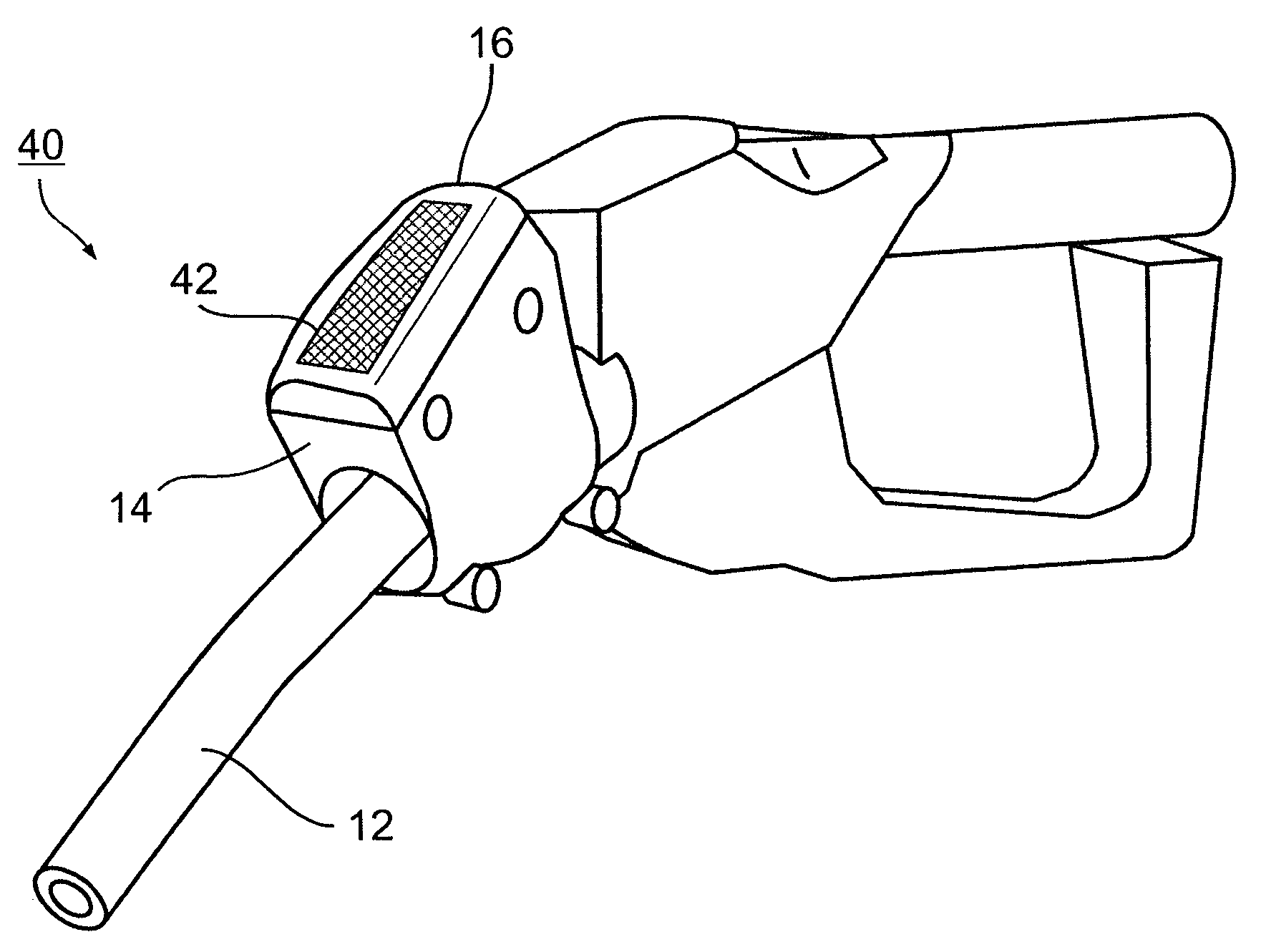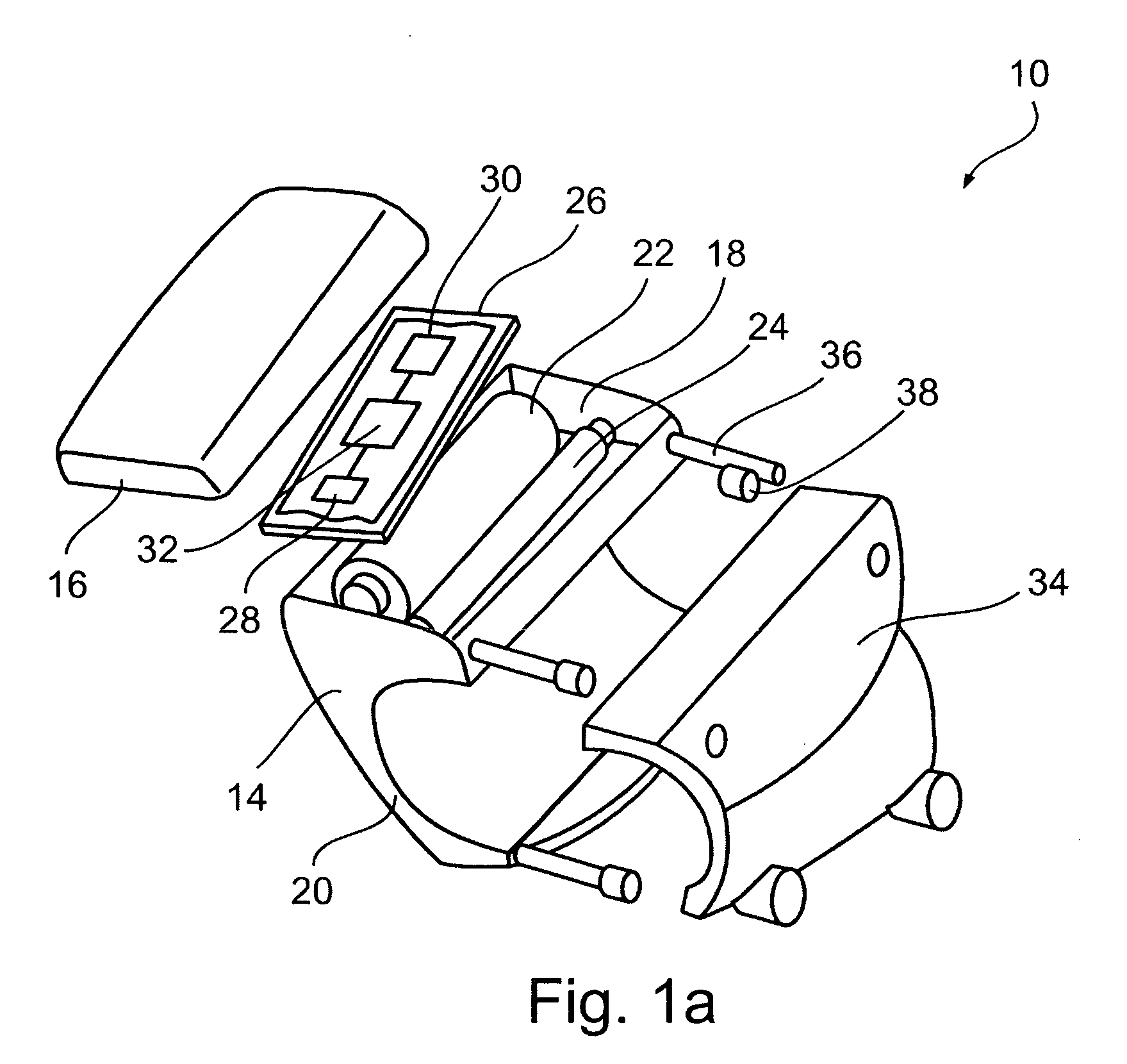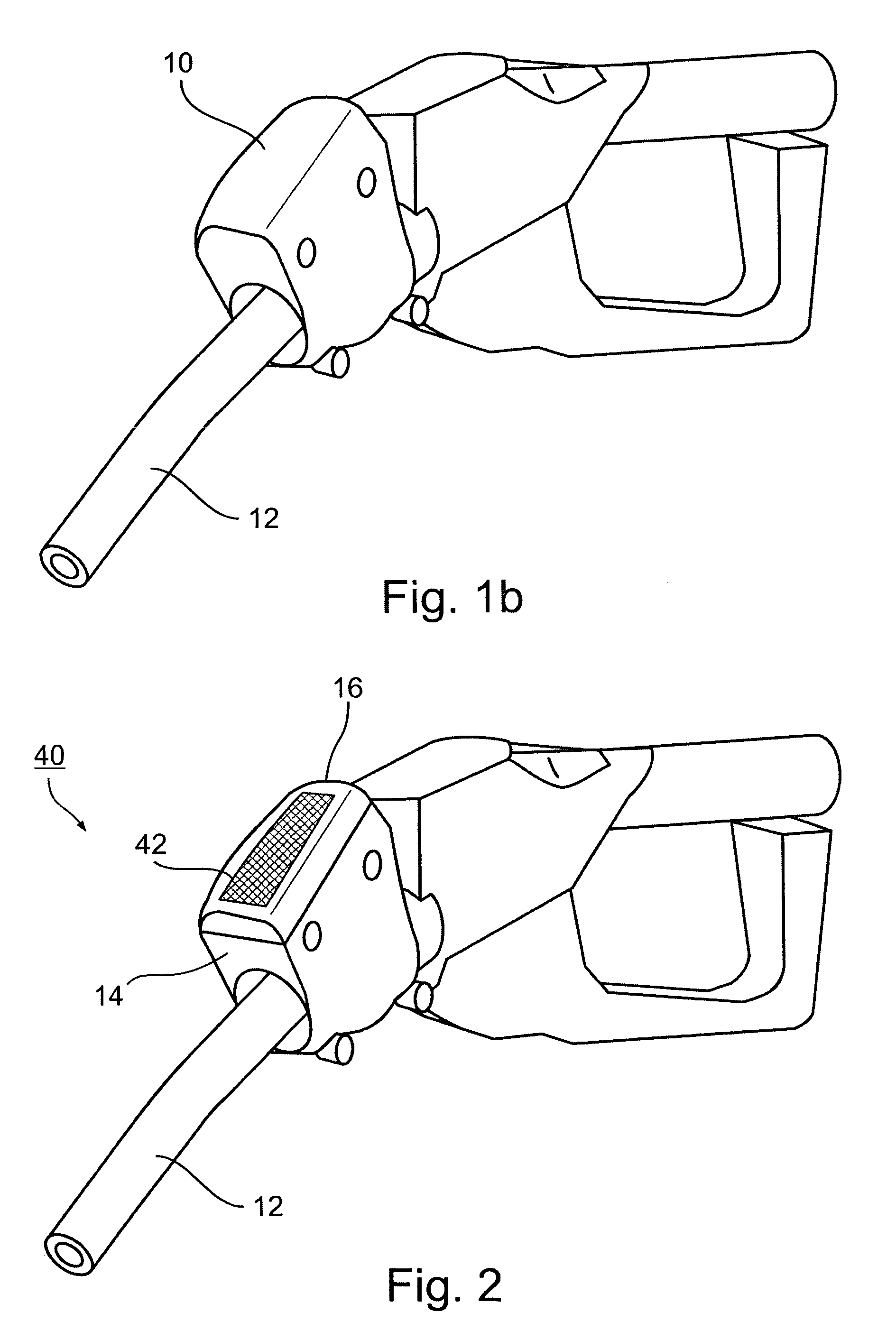Devices and Methods Useful for Authorizing Purchases Associated with a Vehicle
a vehicle and authorization technology, applied in the field of vehicle authorization, can solve the problems of reducing the service life requiring a relatively long time for the actual refueling process, and requiring a large amount of time, so as to reduce the theft of the vehicle identification tag, reduce the cost of installation, and increase the adhesive strength
- Summary
- Abstract
- Description
- Claims
- Application Information
AI Technical Summary
Benefits of technology
Problems solved by technology
Method used
Image
Examples
first embodiment
[0152]In FIG. 7A is depicted the eighth aspect of the present invention. A vehicle identification tag 92 (substantially a prior art passive RFID circuit embedded in a thin plastic casing about the size of a dime, e.g., substantially as described in U.S. patent application Ser. No. 10 / 433,606 published as US 2004 / 0075616) is attached to a refueling port 70 of a vehicle in proximity of a fuel inlet pipe 71 with the use of an adhesive, (e.g., VHB™ by 3M™ corporation, St. Paul, Minn., USA), to form an adhesion 94. The material (e.g., foam rubber or plastic) from which the casing of vehicle identification tag 92 is fashioned is selected to have a structural strength lesser than the strength of adhesion 94. When a person attempts to remove vehicle identification tag 92, there is no choice but to use a chisel or the like which breaks and renders vehicle identification tag 92 unusable.
second embodiment
[0153]In FIG. 7B is depicted the eighth aspect of the present invention. A vehicle identification tag 96 is provided having a vehicle identification circuit 74 embedded inside a casing 124. Casing 124 is made up of two parts, an upper casing part 126 and a lower casing part 128. In each casing part 126 and 128 is embedded a portion of vehicle identification circuit 74 so that when casing parts 126 and 128 are separate, vehicle identification circuit 74 substantially does not function. Casing parts 126 and 128 are mated and secured together using a second adhesive to form a second adhesion 98 and complete vehicle identification circuit 74. Second adhesive is selected so that second adhesion 98 constitutes a weak point of casing 124. Vehicle identification tag 96 is attached to a refueling port 70 of a vehicle in proximity of a fuel inlet pipe 71 with the use of a first adhesive to form a first adhesion 100. The first adhesive (e.g., VHB™ by 3M™ corporation, St. Paul, Minn., USA) is c...
third embodiment
[0154]the eighth aspect of the present invention, vehicle identification tag 130 is depicted in FIGS. 7C, 7D and 7E.
[0155]In FIG. 7C, tag 130 is depicted ready for attachment to a vehicle. Tag 130 comprises a casing 124 (about the size of a dime) in which passive vehicle identification circuit 74 (substantially a passive RFID circuit e.g., substantially as described in U.S. patent application Ser. No. 10 / 433,606 published as US 2004 / 0075616) is embedded close to the center of the bottom surface of casing 124. Circular antenna 134 is embedded close to the periphery of casing 124 and is functionally associated with vehicle identification circuit 74 through wires 136. Adhesive protective sheet 138 is removably attached to the bottom surface of casing 124 with adhesive, as discussed below.
[0156]In FIG. 7D, the bottom surface of casing 124 of tag 130 is depicted after the removal of adhesive protective sheet 138. It is seen that the bottom surface is divided into two substantially concen...
PUM
 Login to View More
Login to View More Abstract
Description
Claims
Application Information
 Login to View More
Login to View More - R&D
- Intellectual Property
- Life Sciences
- Materials
- Tech Scout
- Unparalleled Data Quality
- Higher Quality Content
- 60% Fewer Hallucinations
Browse by: Latest US Patents, China's latest patents, Technical Efficacy Thesaurus, Application Domain, Technology Topic, Popular Technical Reports.
© 2025 PatSnap. All rights reserved.Legal|Privacy policy|Modern Slavery Act Transparency Statement|Sitemap|About US| Contact US: help@patsnap.com



